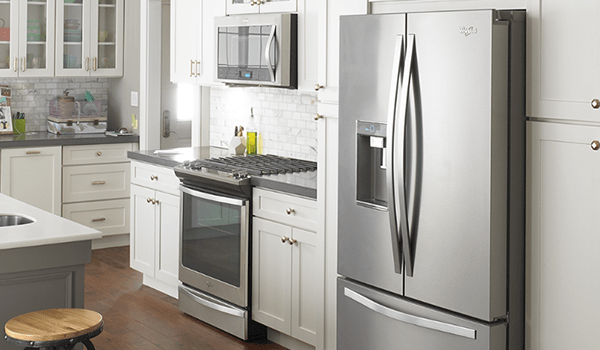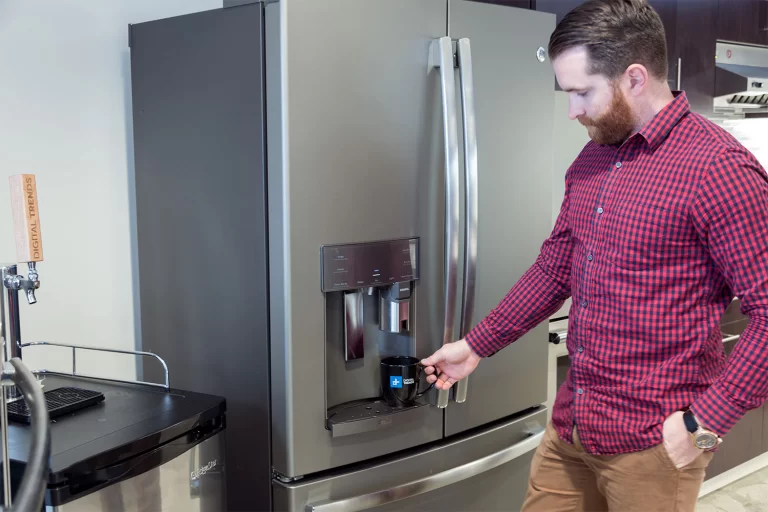During the scorching heat of summer or those muggy nights, the last thing you want is for your Frigidaire air conditioner buttons to stop working. Whether it’s a lack of response from the unit or buttons that don’t light up, you’re essentially left with a non-operational AC. Not only is a functioning air conditioner crucial for comfort, but it’s also important for health reasons, especially for those living in extremely hot climates. This comprehensive guide aims to tackle the common causes and troubleshooting steps for non-working buttons on your Frigidaire air conditioner.
If your Frigidaire air conditioner buttons are not working, it could be due to a variety of reasons, from electrical issues to simple obstructions. Start by resetting the unit and cleaning around the buttons. If the issue persists, it may require electrical testing or professional repair.
Identifying the Problem
Symptoms
Understanding the symptoms of malfunctioning buttons on your Frigidaire air conditioner is the first step in addressing the issue effectively. The signs that your AC unit’s buttons aren’t working could be subtle or glaringly obvious. Here are some common symptoms you may encounter:
- Buttons Don’t Light Up: The backlight that usually illuminates the buttons fails to turn on, making it difficult to operate the unit in dim lighting conditions.
- No Response When Pressed: This is the most straightforward symptom. You press a button, expecting the air conditioner to react (turn on, adjust temperature, etc.), and nothing happens.
- Some Buttons Work While Others Don’t: In some instances, you might find that while the power button is responsive, the temperature or fan speed buttons are not, or vice versa. This could be a sign of selective button failure.
Fact: According to a study by the U.S. Department of Energy, malfunctioning control systems can reduce the efficiency of your air conditioner by 5% to 10%. Therefore, identifying and fixing button issues is not just a matter of convenience but also of energy efficiency.
Initial Checks
Before diving deeper into the troubleshooting process, it’s essential to eliminate basic issues that could be mistaken for malfunctioning buttons:
- Confirming Power Supply: Ensure that the air conditioner is plugged in securely and that the outlet is functional. You’d be surprised how many times the issue comes down to a loose plug. A simple test is to plug another device, like a lamp, into the same outlet to check its functionality.
- Remote Control Testing: Try controlling the air conditioner with the remote. If the unit responds to the remote but not the buttons, you can reasonably conclude that the problem lies with the buttons and not the unit as a whole. According to a survey by Consumer Reports, nearly 20% of air conditioner issues are related to control systems, including remotes and buttons, making it one of the more common problems people face with their AC units.
- Check for Display Messages: Some modern Frigidaire air conditioner models come with an LCD that displays error messages. If you see any messages, consult the user manual for their meaning; it could offer insights into the problem.
- Inspect for Physical Damage: If there’s visible damage to the buttons (like cracks or signs of impact), this could be the direct cause of the problem. In such cases, you’ll likely need to replace the damaged parts.
By starting with these initial checks, you can either resolve some of the simpler issues yourself or be better prepared to describe the problem if you need to consult with a professional.
Common Causes of Button Failure
Electrical Issues
Electrical issues can often be the culprit when your air conditioner’s buttons are malfunctioning. Here are some specific electrical problems that could be at play:
- Circuitry and Wiring Problems: Over time, the internal wiring and circuits of your air conditioner can degrade, leading to electrical inconsistencies. Loose wiring or corroded connections can affect button functionality.
- Power Outages or Surges: Sudden power outages or electrical surges can sometimes cause temporary or even permanent issues with your AC unit’s buttons. According to the Institute of Energy Management, power surges account for roughly 12.5% of all air conditioning system failures.
- Fused Buttons: In some cases, electrical short-circuits can cause the button’s electrical components to fuse, rendering them non-operational.
Mechanical Issues
Mechanical factors can also cause buttons to become unresponsive or sticky. Let’s delve into the details:
- Stuck or Jammed Buttons: Dirt, dust, or even accidental spills can cause buttons to stick or jam. Regular maintenance can prevent this issue.
- Wear and Tear: Over time, mechanical parts age. If you’ve had your AC unit for several years, wear and tear might simply make the buttons less responsive. According to HVAC professionals, nearly 30% of service calls are due to mechanical issues that could have been prevented through routine maintenance.
Software/Firmware Issues
While it might not be the first thing that comes to mind, software issues can also affect the operation of your air conditioner’s buttons, particularly for modern, high-tech units:
- Outdated Software: Software that hasn’t been updated for a long time may cause various operational problems, including unresponsive buttons.
- Corrupted Firmware: A faulty update or an unexpected shutdown during an update can corrupt the air conditioner’s firmware, leading to functional issues.
- Incompatibility: For smart air conditioners, software incompatibility between the AC unit and any connected smart home systems can occasionally cause issues.
Fact: A 2019 survey from the Air Conditioning, Heating, and Refrigeration Institute highlighted that software issues are becoming increasingly common as air conditioners become more advanced, making up almost 10% of all AC service calls.
Troubleshooting Steps
Resetting Your AC Unit
Performing a reset can often solve a multitude of issues and should be your first go-to step for troubleshooting:
- Unplug the Unit: Disconnect the air conditioner from the power source. Wait for about 15-20 minutes to allow any residual electrical charge to dissipate, then plug it back in and check the buttons.
- Factory Reset: For a more thorough approach, consider performing a factory reset. This will return all settings to their original state. Check your user manual for instructions, which usually involve pressing a specific combination of buttons for a few seconds.
Note: Be sure to back up any custom settings before doing a factory reset, as this process will erase all your configurations.
Checking for Obstructions
Physical obstructions can often be the culprit behind malfunctioning buttons:
- Clean Around the Buttons: Use a soft, dry cloth to gently clean around the buttons. For more stubborn residues, you can use a slightly damp cloth with mild detergent.
- Inspect the Front Panel: Most Frigidaire models allow you to remove the front panel for cleaning and inspection. Check for debris, dirt, or any foreign objects that may be interfering with the button mechanism.
Testing Electrical Components
If you’re comfortable with basic electrical testing, this section is for you:
- Using a Multimeter: A multimeter can help you test the electrical conductivity of the buttons. Disconnect the air conditioner from the power source, open up the control panel, and use the multimeter to check each button’s circuit. A lack of electrical continuity is a sign that the button is faulty.
- Check Fuses and Circuit Breakers: Faulty fuses and tripped circuit breakers can also lead to non-functional buttons. Locate the fuse box and check to ensure that all fuses related to the air conditioner are in good condition. Replace if necessary.
Software Checks
If your Frigidaire air conditioner is a modern unit with digital features, these checks can be beneficial:
- Software Updates: Visit Frigidaire’s official website to see if there are any software updates available for your unit. Download and install updates as needed.
- Reinstall Firmware: If a faulty update has caused the buttons to become unresponsive, consider re-installing the firmware. You can typically find the firmware and installation instructions on the manufacturer’s website.
Caution: This step should only be attempted by users who are comfortable with technology and software installation, as an incorrect installation could lead to more problems.
Seeking Online Help
Check Online Forums: Websites and forums dedicated to air conditioner repairs can often provide valuable insights. Always cross-verify any advice you get online and, when in doubt, consult a professional.
Watch Repair Videos: Platforms like YouTube have a plethora of DIY repair videos that can guide you through the troubleshooting process.
When to Call a Professional
Warning Signs
There are specific scenarios where it’s not advisable to proceed with DIY solutions, and it’s better to call in a professional:
- Repeated Failures: If you’ve attempted to troubleshoot the issue and the problem persists or recurs frequently, it’s time to seek professional help. Repeated failures indicate an underlying issue that requires expert attention.
- Smoke or Electrical Sparks: These are emergency situations. Turn off the unit and unplug it immediately. In such cases, it’s vital to get an expert technician to look into the matter as it could be dangerous to tackle yourself.
- Water Leaks or Condensation Inside the Control Panel: Moisture near electrical components is a hazard and can indicate a severe problem with your AC unit. Call a professional for a thorough diagnosis.
Cost-Benefit Analysis
- Older Units: If your unit is older, consider the cost-effectiveness of repair vs. replacement. Sometimes a button failure could be indicative of an aging system that may require more frequent repairs in the future. According to the National Association of Home Builders, the average lifespan of an air conditioner is about 15-20 years.
- Complex Repairs: Some repairs require specialized parts that are only available to certified technicians. If you find that you need to order specific parts, it’s often a sign you should hire a professional.
Efficiency Considerations
- Expert Diagnosis: A professional can not only fix the current issue but also conduct a full system check to improve the overall efficiency of your unit. They may catch problems you didn’t know existed, saving you money in the long run.
- Warranty Compliance: If your air conditioner is still under warranty, any DIY fixes could void it. Always consult a professional for repairs to remain compliant with your warranty terms.
How to Choose the Right Professional
- Certifications: Always hire a technician who is certified to work on HVAC systems. Certification ensures that the technician has been trained to handle a variety of issues, including button failure.
- Reviews and Recommendations: Look for technicians who have excellent customer reviews and come recommended from reliable sources.
- Cost Estimates: Always get an upfront estimate for the repair work. Some companies offer a free initial diagnosis, while others may charge a small fee that is later deducted from the repair costs.
- Data Point: According to HomeAdvisor, the average cost of a minor air conditioner repair in the United States is between $163 and $520, with most homeowners spending around $319. Knowing this range can help you make a more informed decision when choosing a technician.
Prevention and Maintenance
Routine Cleaning
Dust and debris can accumulate over time, affecting not just your air quality but also the functionality of your unit’s buttons and other components.
- Button Area: Use a soft, lint-free cloth to gently wipe around the button area at least once a month. For more thorough cleaning, a cotton swab dipped in isopropyl alcohol can be effective.
- Front Panel and Filters: Cleaning the front panel and filters is not only good for air quality but also for overall unit efficiency.
Electrical Safety Checks
Electrical components should be checked at least bi-annually to ensure they are functioning correctly.
- Circuit Breakers and Fuses: Regularly inspect circuit breakers and fuses. Replace or reset them as needed.
- Wiring Inspection: Loose or frayed wires can be a safety hazard and cause malfunctioning. An annual inspection by a certified electrician or HVAC technician is advisable.
Software Updates
For modern, smart air conditioners:
- Regular Updates: Always keep your unit’s software up-to-date to benefit from bug fixes and performance improvements. Enable automatic updates if this feature is available.
- Compatibility Checks: Ensure that your smart air conditioner is compatible with all other smart home systems you are using. Update those systems as well to avoid compatibility issues.
Seasonal Maintenance
- Pre-Season Checks: Before the start of summer or the peak cooling season in your region, consider getting a professional maintenance service. These services often include electrical checks, coolant level monitoring, and overall performance tests that can preemptively solve a lot of problems, including button issues.
- End-of-Season: At the end of the cooling season, make sure to properly store your air conditioner if it’s a portable or window unit. Store it in a dry place and cover it to prevent dust accumulation.
Protecting Against Power Surges
Surge Protectors: Using a surge protector can prevent electrical surges from damaging your air conditioner. This can be particularly useful in areas that are prone to storms or unstable electrical supply.
Extended Warranties and Service Plans
- Consider an Extended Warranty: If you live in an area with unstable electrical supply or extreme weather conditions, an extended warranty or service plan could be a wise investment.
- Scheduled Professional Maintenance: Many HVAC companies offer annual or bi-annual maintenance packages. These scheduled visits can catch issues before they become significant problems, saving you time and money in the long run.
Fact: According to a study by the U.S. Energy Information Administration, well-maintained air conditioners can be up to 25% more efficient than neglected units, translating into significant savings on your energy bills.
FAQs
How often should I clean the buttons and control panel on my Frigidaire air conditioner?
Cleaning the control panel and buttons once a month is generally sufficient for maintaining their functionality. However, if the unit is in a particularly dusty environment, you may need to clean it more often. Use a soft, lint-free cloth and, for tougher grime, a cotton swab dipped in isopropyl alcohol.
My air conditioner’s buttons work, but the remote control doesn’t. What should I do?
If your air conditioner’s buttons are functioning but the remote control is not, try replacing the remote’s batteries first. If the issue persists, you may need to either repair or replace the remote control. Check the user manual for troubleshooting steps specific to your remote model.
Are malfunctioning buttons covered under my Frigidaire warranty?
Warranty coverage varies by model and place of purchase. In general, factory defects like malfunctioning buttons are usually covered within a certain time frame. Always consult your warranty agreement and contact Frigidaire customer support for confirmation.
Can I use my smartphone to control my Frigidaire air conditioner if the buttons aren’t working?
Many modern Frigidaire air conditioners come with smart features that allow you to control them via a smartphone app. If your unit’s buttons are malfunctioning, using the app can be a temporary solution while you seek repairs. Ensure your unit’s firmware and the app are both up-to-date for the best experience.
Is it safe to perform a factory reset on my Frigidaire air conditioner?
Performing a factory reset is generally safe and can resolve many issues, including malfunctioning buttons. However, it will erase all your personalized settings, so make sure to back them up if possible. Always follow the factory reset instructions provided in your user manual to avoid any complications.
Conclusion
Non-working buttons on your Frigidaire air conditioner can be more than just an annoyance; they can disrupt your comfort and well-being. The key is to identify whether it’s an electrical, mechanical, or software issue and then take the appropriate steps to fix it. Sometimes, it’s as simple as a reset, and other times it requires professional intervention. Regular maintenance can help prevent these issues and save you both time and money in the long run.






